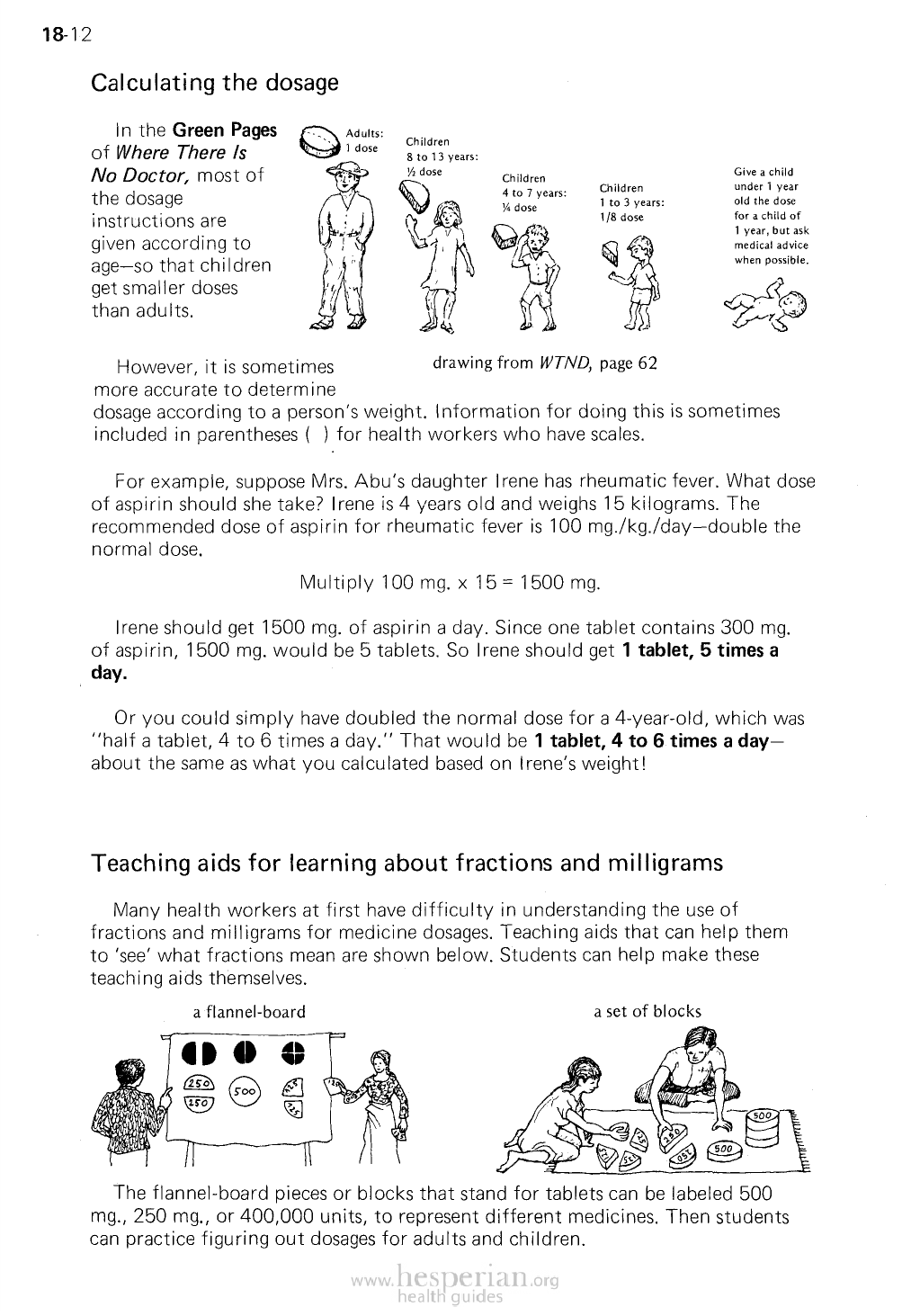
18-12
Calculating the dosage
In the Green Pages
of Where There Is
No Doctor, most
of the dosage
instructions are
given according
to age—so that
children get smaller
doses than adults.
Adults:
1 dose
Children
8 to 13 years:
½ dose
Children 4
to 7 years:
¼ dose
Children
1 to 3 years:
1/8 dose
Give a child
under 1 year
old the dose
for a child of
1 year, but ask
medical advice
when possible.
However, it is sometimes
drawing from WTND, page 62
more accurate to determine
dosage according to a person’s weight. Information for doing this is sometimes
included in parentheses ( ) for health workers who have scales.
For example, suppose Mrs. Abu’s daughter Irene has rheumatic fever. What
dose of aspirin should she take? Irene is 4 years old and weighs 15 kilograms. The
recommended dose of aspirin for rheumatic fever is 100 mg./kg./day—double the
normal dose.
Multiply 100 mg. x 15 = 1500 mg.
Irene should get 1500 mg. of aspirin a day. Since one tablet contains 300 mg.
of aspirin, 1500 mg. would be 5 tablets. So Irene should get 1 tablet, 5 times a
day.
Or you could simply have doubled the normal dose for a 4-year-old, which was
“half a tablet, 4 to 6 times a day.” That would be 1 tablet, 4 to 6 times a day—
about the same as what you calculated based on Irene’s weight!
Teaching aids for learning about fractions and milligrams
Many health workers at first have difficulty in understanding the use of fractions
and milligrams for medicine dosages. Teaching aids that can help them to ‘see’
what fractions mean are shown below. Students can help make these teaching aids
themselves.
a flannel-board
a set of blocks
The flannel-board pieces or blocks that stand for tablets can be labeled 500 mg.,
250 mg., or 400,000 units, to represent different medicines. Then students can
practice figuring out dosages for adults and children.